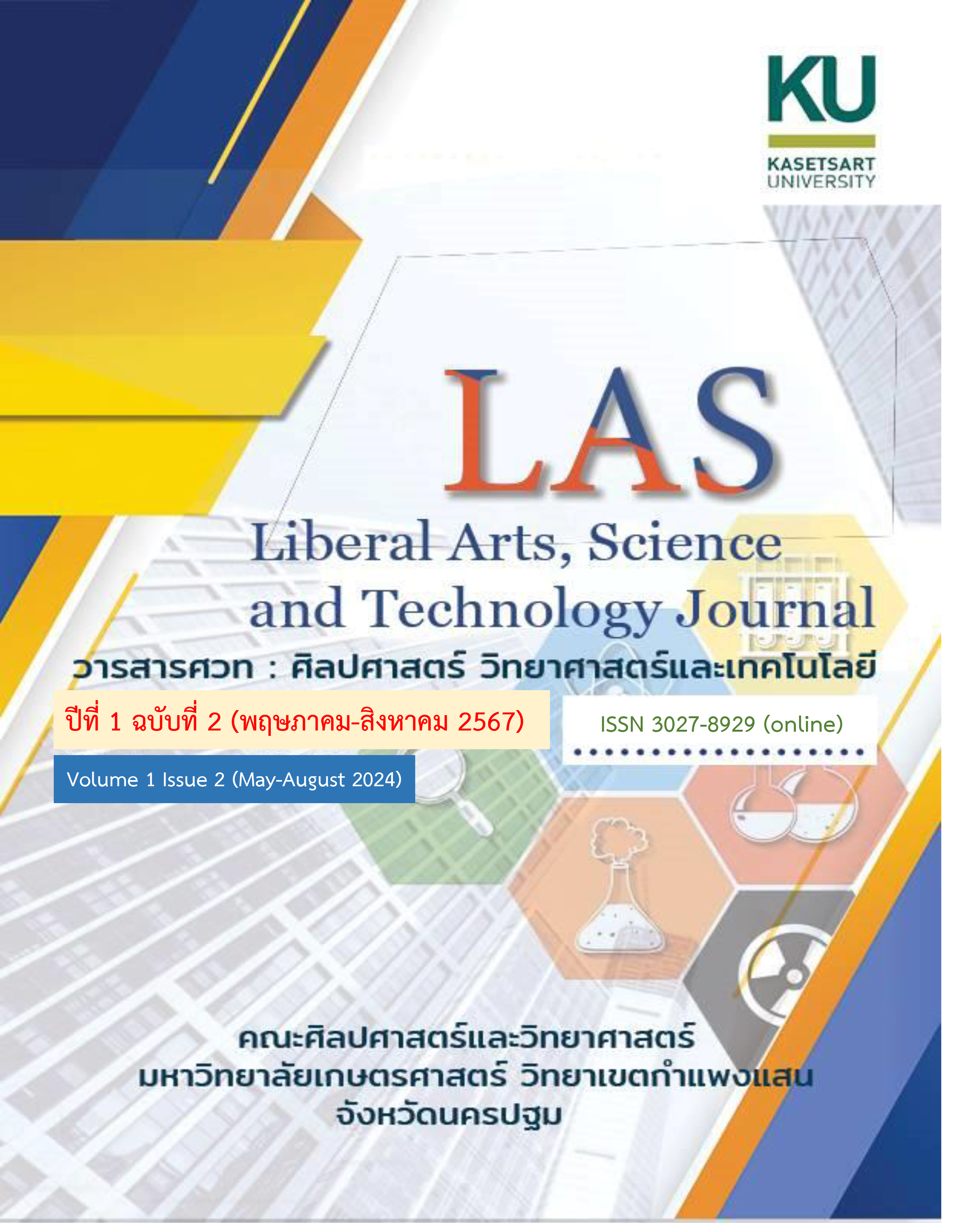สารประกอบฟีนอลและฤทธิ์ทางชีวภาพของสาหร่ายพวงองุ่นและสาหร่ายขนนก
คำสำคัญ:
สารพฤกษเคมี, สารต้านอนุมูลอิสระ, ไทโรซิเนส, เแอลฟา-กลูโคซิเดสบทคัดย่อ
สาหร่ายพวงองุ่นและสาหร่ายขนนกจัดเป็นสาหร่ายทะเลที่มีความสำคัญ มีการเพาะเลี้ยงเชิงพาณิชย์และนิยมนำมาบริโภค งานวิจัยนี้มีวัตถุประสงค์เพื่อเปรียบเทียบสารประกอบฟีนอล ฤทธิ์ต้านอนุมูลอิสระโดยการตรวจสอบด้วยวิธี 2,2-diphenyl-1-picrylhydrazyl radical scavenging (DPPH) วิธี ferric reducing antioxidant power (FRAP) และวิธี reducing power และฤทธิ์การยับยั้งเอนไซม์ tyrosinase และ α-glucosidase ของสารสกัดจากสาหร่ายพวงองุ่นและสาหร่ายขนนกที่เก็บมาจากจังหวัดตรังในเดือนมกราคม เมษายน และกรกฎาคม จากการศึกษาพบว่า ชนิดของสาหร่ายและช่วงเวลาเก็บตัวอย่างมีผลต่อปริมาณสารประกอบฟีนอลและฤทธิ์ทางชีวภาพของสารสกัดสาหร่าย สาหร่ายขนนกมีปริมาณสารประกอบฟีนอล ฟลาโวนอยด์ ฤทธิ์ต้านอนุมูลอิสระ และฤทธิ์การยับยั้งเอนไซม์ tyrosinase มากกว่าสาหร่ายพวงองุ่นอย่างมีนัยสำคัญทางสถิติ แต่มีฤทธิ์ในการยับยั้งเอนไซม์ α-glucosidase ไม่แตกต่างกันทางสถิติ ช่วงเวลาการเก็บตัวอย่างในเดือนมกราคม มีปริมาณฟลาโวนอยด์ ฤทธิ์ต้านอนุมูลอิสระ FRAP และการยับยั้งเอนไซม์ tyrosinase มากที่สุด เดือนเมษายน มีปริมาณฟีนอล ฤทธิ์ต้านอนุมูลอิสระ reducing power และการยับยั้งเอนไซม์ α-glucosidase มากที่สุด สารสกัดจากสาหร่ายพวงองุ่นและสาหร่ายขนนกมีฤทธิ์ในการยับยั้งเอนไซม์ tyrosinase และ α-glucosidase ค่อนข้างสูงอยู่ในช่วง 58.33% ถึง 97.55% และ 42.66% ถึง 72.27% ตามลำดับ ดังนั้นสารสกัดจากสาหร่ายพวงองุ่นและสาหร่ายขนนกจึงเป็นอีกหนึ่งทางเลือกในการแปรรูปให้เป็นอาหารเพื่อสุขภาพและด้านอุตสาหกรรมยา
เอกสารอ้างอิง
กองวิจัยและพัฒนาการเพาะเลี้ยงสัตว์น้ำชายฝั่ง. (2560). การแพร่กระจายของสาหร่ายพวงองุ่น การจัดการความรู้การเพาะเลี้ยงและการจัดการสาหร่ายพวงองุ่นหลังการเก็บเกี่ยว จังหวัดเพชรบุรี.
วสันต์ สุมินทิลี่, ปนิดา บรรจงสินศิริ, จันทรา ไพรบูรณ์, และวรรณวิมล คล้ายประดิษฐ์. (2557). กิจกรรมการต้านอนุมูลอิสระของสารสกัดหยาบจากสาหร่ายพวงองุ่น (Caulerpa lentillifera) สาหร่ายทุ่น (Sargassum oilgocystum) และสาหร่ายเขากวาง (Gracilaria changii). วารสารเทคโนโลยีการอาหาร มหาวิทยาลัยสยาม, 9(1), 63–75.
ศุลีมาศ สุทธิเนียม. (2552). การใช้สาหร่ายขนนก Caulerpa sertularioides บำบัดไนโตรเจนและฟอสฟอรัสในน้ำจากการเลี้ยงกุ้งขาวแวนนาไม Penaeus vannamei แบบพัฒนา [วิทยานิพนธ์ปริญญาโท]. มหาวิทยาลัยสงขลานครินทร์. http://kb.psu.ac.th/psukb/handle/2010/6074
อรอนงค์ ศรีพวาทกุล, มนทกานติ ท้ามติ้ม, และประพัฒน์ กอสวัสดิ์พัฒน์. (2564). การพัฒนาผลิตภัณฑ์ผงโรยข้าวปลาเสริมสาหร่ายพวงองุ่น. วารสารวิทยาศาสตร์และเทคโนโลยี มหาวิทยาลัยราชภัฏอุดรธานี, 9(2), 69–82.
อุไรวรรณ วัฒนกุล, วัฒนา วัฒนกุล, และมาโนช ขำเจริญ. (2562). คุณค่าทางโภชนาการและสารพฤกษเคมีที่สำคัญในสาหร่ายพวงองุ่น (Caulerpa lentillifera) ที่เลี้ยงด้วยระดับธาตุอาหารต่างกัน. รายงานการวิจัย คณะวิทยาศาสตร์และเทคโนโลยีการประมง, มหาวิทยาลัยเทคโนโลยีราชมงคลศรีวิชัย.
Arguelles, E. D. L. R. (2021). Evaluation of antioxidant capacity, tyrosinase inhibition, and antibacterial activities of brown seaweed, Sargassum ilicifolium (Turner) C. Agardh 1820 for cosmeceutical application. Journal of Fisheries and Environment, 45, 64–77.
Benzie, F. F., & Strain, J. J. (1996). The ferric reducing ability of plasma (FRAP) as a measure of “antioxidant power”: the FRAP assay. Analytical Biochemistry, 239(1), 70–76.
Brand-Williams, W., Cuvelier, M. E., & Berset, C. (1995). Use of a free radical method to evaluate antioxidant activity. LWT-Food Science and Technology, 28(1), 25–30.
Cheng, A. Y. Y., & Fantus, I. G. (2005). Oral antihyperglycemic therapy for type 2 diabetes mellitus. Canadian Medicinal Association Journal, 172(2), 213–226.
de Melo, N. S. M., Cardoso, L. G., de Castro Nunes, J. M. C., Brito, G. B., Caires, T. A., de Souza, C. O., Portz, L., & Druzian J. I. (2021). Effects of dry and rainy seasons on the chemical composition of Ulva fasciata, Crassiphycus corneus, and Sargassum vulgare seaweeds in tropical environment. Brazillian Journal of Botany, 44, 331–344.
Estrada, J. L., & Dioniso-sese, M. L. (2020). Sea Grapes (Caulerpa spp.) (Chlorophyta: Caulerpaceae) from Coron, Northern Palawan, Philippines with notes on their harvest and production. Tropical Natural History, 20(3), 255–264.
Estrada, J. L., Bautista, N. S., & Dioniso-sese, M. L. (2020). Morphological variation of two common sea grapes (Caulerpa lentillifera) and (Caulerpa racemose) from selected regions in the Philippines. Biodiversitas, 21(5), 1823–1832.
Fajriah, S., Rizki, I. F., & Sinurat, E. (2021). Characterization and analysis of the antidiabetic activities of sulphated polysaccharide extract from Caulerpa lentillifera. Pharmacia, 68(4), 869–875.
Farvin, K. H. S., & Jacobsen, C. (2013). Phenolic compounds and antioxidant activities of selected species of seaweeds from Danish Coast. Food Chemistry, 138, 1670-1681.
Ismail, M. F., Ramaiya, S. D., Zakaria, M. H., Ikhsan, N. F. M., & Awang, M. A. (2020). Mineral content and phytochemical properties of selected Caulerpa species from Malaysia. Malaysia Journal of Science, 39(3), 115–131.
Kim, Y. J., & Uyama, H. (2005). Tyrosinase inhibitors from natural and synthetic source: structure, inhibition mechanism and prospective for the future. Cellular and Molecular Life Sciences, 62, 1707–1723.
Kumar, S., Sahoo, D., & Levine, I. (2015). Assessment of nutritional value in a brown seaweed Sargassum wightii and their seasonal variations. Algal Research, 9, 117–125.
Lewmanomont, K., & Hisao, O. (1995). Common seaweeds and seagrasses of Thailand. Faculty of Fisheries, Kasetsart University.
Neagu, E., Radu, G. L., Albu, C., & Paun, G. (2016). Antioxidant activity, acetylcholinesterase and tyrosinase inhibitory potential of Pulmonaria officinalis and Centarium umbellatum extracts. Saudi Journal of Biological Science, 25, 578–585.
Nguyen, D., Novakava, A., Spurna, K., Hricko, J., Phung, H., Viktorova, J., Stranska, M., Hajslova, J., & Ruml, T. (2017). Antidiabetic compounds in stem juice from banana. Czech Journal of Food Science, 35(5), 407–413.
Pattarach, K., Mayakun, J., & Draisma, S. G. A. (2019). An enigmatic Caulerpa macrodisca Decaisne (Chlorophyta) from the mangrove channels on the Andaman Sea Coast of Thailand. Journal of Fisheries and Environment, 43(2), 27–42.
Paul, N. A., Neveux, N., Magnusson, M., & de Nys, N. (2014). Comparative production and nutritional value of “sea grapes” the tropical green seaweeds Caulerpa lentillifera and C. racemose. Journal of Applied Phycology, 26, 1833–1844.
Peinado, I., Girón, J., Koutsidis, G., & Ames, J. M. (2014) Chemical composition, antioxidant activity and sensory evaluation of five different species of brown edible seaweeds. Food Research International, 66, 36–44.
Ratana-arporn, P., & Anong, C. (2006). Nutritional evaluation of tropical green seaweeds Caulerpa lentillifera and Ulva reticulata. Kasetsart Journal – Natural Science, 40, 75–83.
Ryu, J. W., Lee, M. S., Yim, M. J., Lee, J. M., Lee, D. S., Kim, Y. M., & Eom, S. H. (2023). α-amylase and α-glucosidase inhibition effects of Korean edible brown, green, and red seaweed extracts. Fisheries and Aquatic Science, 26, 181–187.
Sharma, S. L., Neves, J., Funderud, L.T., Mydland, M., & Verland, S. J. H. (2018). Seasonal and depth variations in the chemical composition of cultivated Saccharina latissima. Algal Research, 32, 107–112.
Singleton, V. L., & Rossi, J. A. (1965). Colorimetry of total phenolics with phosphomolybdicphosphotungstic acid reagents. American Journal Enology Viticulture, 16, 144–158.
Solano, F., Briganti, S., Picardo, M., & Ghanem, G. (2006). Hypopigmenting agents: an updated review on biological, chemical and clinical aspects. Pigment Cell Research, 19, 550–571.
Yap, F., Tay, V., Tan, H., Yow, Y., & Chew, J. (2019). Decoding antioxidant and antibacterial potentials of Malaysian green seaweeds: Caulerpa racemosa and Caulerpa lentillifera. Antibiotics, 8(3). https://doi.org/10.3390/antibiotics8030152
Yen, G. C., & Chen, H. Y. (1995). Antioxidant activity of various tea extracts in relation to their antimutagenicity. Journal of Agricultural and Food Chemistry, 43, 27–32.
Zhishen, J., Mengcheng, T., & Jianming, W. (1999). The determination of flavonoid contents in mulberry and their scavenging effects on superoxide radicals. Food Chemistry, 64,
–559.
ดาวน์โหลด
เผยแพร่แล้ว
รูปแบบการอ้างอิง
ฉบับ
ประเภทบทความ
หมวดหมู่
สัญญาอนุญาต
ลิขสิทธิ์ (c) 2024 ศวท : ศิลปศาสตร์ วิทยาศาสตร์และเทคโนโลยี (LAS: Liberal Arts, Science and Technology)

อนุญาตภายใต้เงื่อนไข Creative Commons Attribution-NonCommercial-NoDerivatives 4.0 International License.







